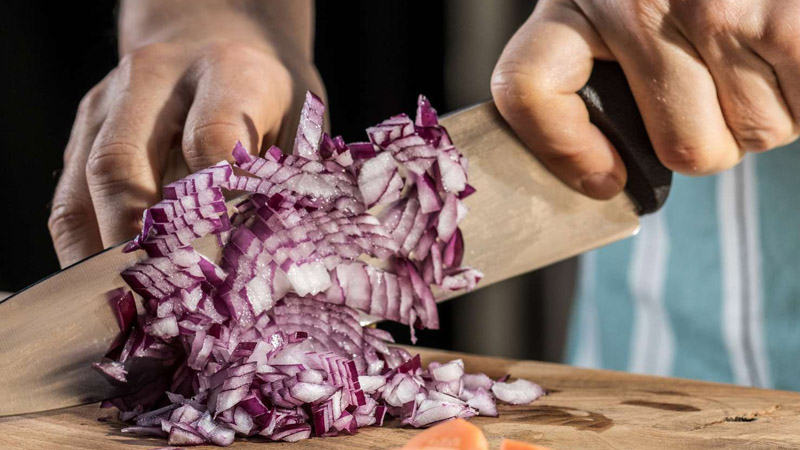Navigating the Tear-Free Onion Chopping Challenge with Safer Alternatives

PHOTO: VM/GETTY IMAGES
The quest to chop onions without the inevitable tears has led to an array of suggestions and hacks, ranging from the intriguing to the bizarre. Celebrity chefs and home cooks alike have offered their remedies, including using a fan to disperse the offending fumes and chewing bread to minimize the tears.
Among these, the method of keeping your knife wet by dipping it in water between cuts has gained some attention. The idea is that the water traps the volatile gases released by the onion, preventing them from reaching your eyes where they transform into a mild acid, causing discomfort and tears.
However, the practicality of the wet knife technique is questionable. The constant interruption to moisten the knife not only slows down the chopping process but also increases the risk of accidents by making the knife slippery. Moreover, it keeps you exposed to the onion fumes for a longer duration.
Instead of resorting to wetting the knife, there are more effective and safer strategies to employ. One such method is chilling the onions before cutting them, which reduces the release of irritating vapors. While wearing goggles might offer some protection, the fumes can still affect the nasal passages.
A more reliable approach, endorsed by renowned chef Jacques Pépin, emphasizes the importance of using a sharp knife. A sharper blade causes less damage to the onion cells, thereby releasing fewer irritants into the air. Additionally, a sharp knife allows for quicker chopping, reducing your exposure to the onion’s fumes.
The underlying principle behind successful no-tear onion chopping techniques lies in their ability to prevent the sulfur-containing compounds, released upon slicing the onion, from reaching your eyes. By understanding the chemistry involved, you can choose the most effective method from the plethora of options available.
For those with particularly sensitive eyes, combining multiple strategies may offer the best defense against onion-induced tears. This way, you can navigate your culinary tasks more comfortably and safely, without the need for constant interruptions or the risk of slippery utensils.


